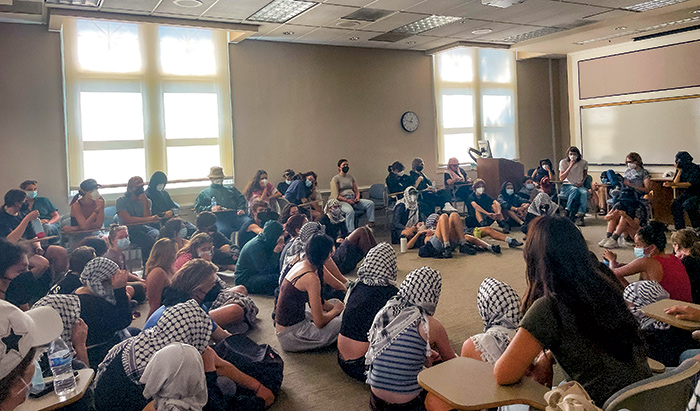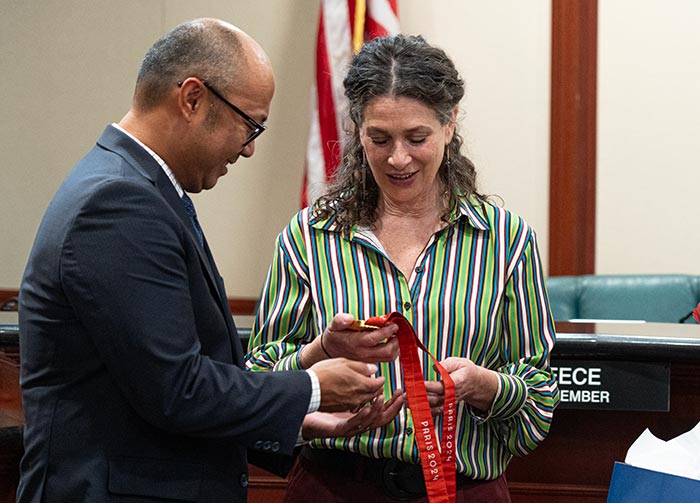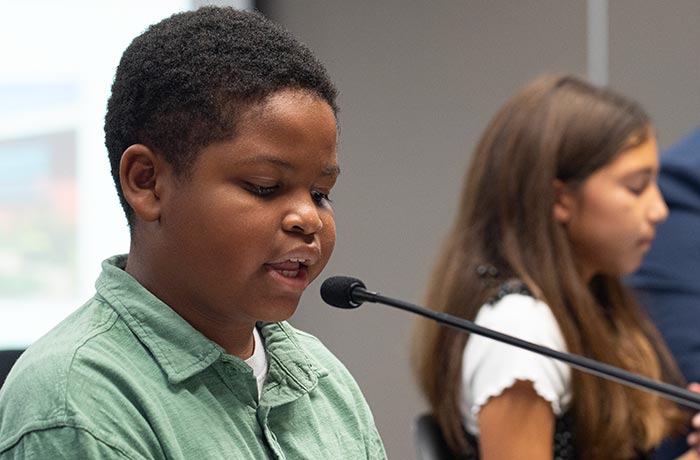College students still absent after 18 months
by Mick Rhodes | mickrhodes@claremont-courier.com
Like most institutions of higher learning in Southern California, Claremont’s esteemed Pomona College was forced to pivot to online remote learning when the COVID-19 pandemic hit in March 2020.
With nearly a year gone by now and what some see as inconsistent messaging on a path forward from Los Angeles County, it’s clear Pomona College President Gabrielle Starr is ready to get back to school.
“We need the county’s powerful governing body—the Board of Supervisors—to provide a clear and responsible path for college students to return to their campuses,” Ms. Starr wrote in an open letter dated February 1. “The young people who will build our future must be heard, and their interests must be an important part of the conversation.”
“I guess it was more like goosing the county,” Ms. Starr told the COURIER this week when asked about the letter.
Her frustration is couched in kind, diplomatic language, but it’s clear Ms. Starr is looking to make something happen.
“This fall it’s going to be 18 months since [students have] seen the inside of classroom, a performance space, or played a musical instrument in an ensemble setting,” she said. “That is a heck of a long time.”
Last fall, when it appeared the virus may have been on the wane, Pomona started to look toward reopening.
“We had begun a conversation with our various representatives and the board of supervisors and department of health to really focus on a waiver program that could at least get some of our students back in classes, particularly for those with special needs, such as challenging living situations at home and difficulty with internet connectivity, just like the public schools in the community,” Ms. Starr said. “We wanted to be able to start bring some of those students back this spring, but we recognized we were convulsed by this steep rise in cases that we had.”
Ms. Starr praised the Claremont community as a whole for its response to the pandemic, which has for the most part bought into mask wearing and social distancing, “and the dedication that we have seen in protecting those who are vulnerable. But at some point we need to get students back in classrooms, back in labs, back in performance spaces,” she said.
Some of the urgency lies in the fact that students are paying quite a lot (full tuition members of its class of 2024 will pay about $232,911 over the course of four years) for a particular type of Pomona College experience. They come from around the globe, lured by its reputation as one of the top liberal arts colleges in the country. Pomona College ranked number four in U.S. News and World Report’s latest nationwide rankings.
“If you’re multiple time zones away—and we have international students in Singapore, Australia, India, you name it—they have turned their lives upside down to continue their education with us. And they can’t do that forever,” Ms. Starr said.
Ms. Starr says she’s hopeful that county leaders will heed the call to re-prioritize college campuses in its tiered reopening plan.
“I note that neighboring counties have been able to re-open college campuses, as have most other governmental entities in the U.S.,” she wrote in her February 1 letter. “I believe it can be done here as well, but so far, attention in our county has been focused elsewhere. Indoor malls, to take one example, are open, with continuing adjustments to occupancy levels, while colleges like Pomona are not even permitted to hold classes outside with social distancing and other precautions. There is no scientific rationale for this variation and, though well-intentioned, it indicates a troubling lack of priority for young people.”
Thus far, she’s had no response from the county.
“Right now we’re still waiting,” Ms. Starr said. “I realize they are extremely busy. This is not what they signed up for either. We would love to be good partners with the county.”
While it waits, the school has made strides on its own to prepare for the day when students are back on campus. For one, a COVID-19 testing program is up and running.
“It takes fewer than four minutes and we can turn around those tests in less than 24 hours,” Ms. Starr said. “And we have contact tracing up and ready to go, all our doors have all been upgraded with touchless openers, and we’ve installed water and air filtration systems.”
Ms. Starr pointed to a recent Journal of the American Medical Association study that found “small colleges like ours really do not drive infection rates in the surrounding community.”
A New York Times story, albeit from mid-December, affirms that assertion. It reports a total of just 26 confirmed coronavirus cases from four of the Claremont Colleges: Pomona, Scripps, Pitzer and Harvey Mudd. Contrast that with nearby behemoth USC, which reported a whopping 808 cases.
“And there is evidence for larger institutions that shows we really need to have shared protocols,” Ms. Starr wrote in a follow-up email.
Ms. Starr said she would like to see her letter help spur a meeting between college presidents across the region and the L.A. County Board of Supervisors. The hope is she and her colleagues can then work with the board to create a certification process, so that once the county gives colleges the go-ahead for reopening, it’s clear to all what next steps would be.
“And then we need to know what the infection rate is, that range, where we can start the process of bringing students and staff back, and getting our campus dusted out and ready to welcome our students,” she added.
Another driver for pushing to reopen sooner rather than later are the seminal experiences of the on-campus college experience which are glaringly absent in the current model.
“It’s a small proportion of their life, but they are really key years,” Ms. Starr said. College students “are still technically in late adolescence. You learn a lot from your peers in college, where you are having experiences that allow you to learn something new. Normally on our campus we have 12 to 13 percent international students. You could bump into a student from Rwanda while you’re walking across campus that could change your life. Online you’re just not going to have those same kinds of interactions. We think if we bring people together in an intentional way, we can do that safely with your mask and your desk and a vaccine and social distancing.”
For now, Pomona’s campus—which for 133 years has been a hive of academic activity—is strangely quiet. Even though it’s been nearly a year since things have been bustling, Ms. Starr says it could be ready to accept students in less than three weeks. All she needs is the word from L.A. County.
“We really have all the ducks in order,” she said. “The question is getting the go-ahead.”








0 Comments